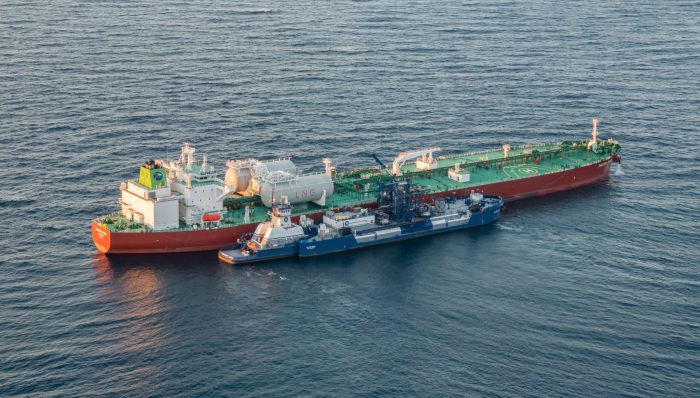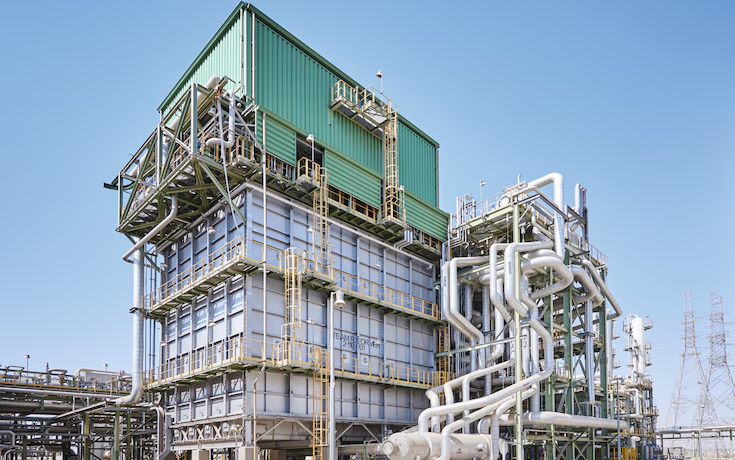
The chemical and material industry is important for economic development, but it has complex dynamics and is vulnerable to a variety of risks. Investors especially need to have profound awareness of the challenges which this industry faces in order to identify opportunities. With this in mind, the following article tries to elaborate on the complex field of risk management and provide subtle insights for the orientation of investors in their decision making process.
1. Market Dynamics and Volatility
It is a chemical and material industry operating at the very juncture of global economic forces, geopolitical shifts, and technological changes. This will require investors to understand its nuances in order to make their way around the industry.
1.1 Economic Indicators and Trends
The growth rates of GDP and manufacturing indices are some of the economic indicators that usually hit the chemical and material industry like a bombshell. These are indeed the kind of indicators that investors should closely watch to assess the health of an industry and predict any change in market trends. By doing so, this may provide a good foundation for investors where they can base their decisions on knowledge of historical trends and estimates of the future course of the economy.
1.2 Geopolitical Influences
Events that concern geopolitics could be trade disputes or international conflicts and may result in large consequences for the chemical and material industry. The investor has to stay alert with regard to geopolitical developments, which may cause disruptions to supply chains, changes to trade policy, and affect regional stability. A geopolitical risk assessment is important in making anticipations of likely market volatility.
1.3 Technological Advancements
The speed at which technology is advancing has opened a window of great opportunity for investors, but it also carries a level of risk. Companies that are the first to adopt innovation often seem to gain a competitive advantage, yet technology can also make current processes and products obsolete. Investors should look at how companies use technology and adjust to changing industry standards to compete over the long term.
2. Regulatory Compliance and Environmental Risks
One of the key risk factors for all investors into the chemical and material industry is mastering this complex regulatory environment. They have to keep themselves updated on various legal requirements and environmental considerations affecting their companies operations.
2.1 Legal and Regulatory Landscape
The chemical and material industry is faced with a burden of regulation that applies on a range from safety and health to environmental standards. It's really important for investors to do their homework to understand the different regulatory conditions that prevail in various parts of the world. How the regulations shape market access, and the compliance costs or profitability implications this further portends on those firms operating in that industry, is far reaching in its possible effects.
2.2 Environmental Sustainability
It's not only an issue of corporate social responsibility but also one of risk management. Investors should try to gauge how companies address environmental concerns, embrace sustainable practices, and manage potential risks associated with environmental impact. Additionally, the growing relevance of ESG criteria for making investment decisions underlines the importance of environmental sustainability in regard to risk assessment.
3. Supply Chain Disruptions
A robust and resilient supply chain is fundamental to the stability and success of companies in the chemical and material industry. Investors should scrutinize the various components of the supply chain to identify and mitigate potential risks.
3.1 Raw Material Sourcing
Sourcing of raw material forms the base of the supply chain. It's important that investors look at how a company has dealt in acquiring such vital raw materials. Diversification in the number of suppliers would be an important risk aversion strategy, as this protects against disruptions, which could be in the form of geopolitical tension, natural disasters, or even a sudden turn in market conditions, among others. Knowing how various geopolitical locations of major suppliers are operating torridly, in terms of geopolitics, may be a pointer to how one can be able to anticipate and moderate any sourly disruptions in the supply chain.
3.2 Logistics and Transportation
This is where timely production and delivery critically depend on efficient logistics and transportation. The investor should understand how the businesses they invest in are handling or managing the risks brought about by disruptions in transportation. Geopolitical tensions may impact several trade routes, natural disasters could compromise transport networks, and regulatory changes could curb the reliability and cost efficiency of the supply chain. Other factors that ought to be considered include the levels of flexibility in existing logistic plans, which depend on alternative transportation modes and contingency plans.
4. Technological Innovation and Cybersecurity
The more digital transformation is fostered in the chemical and material industry, the more technology innovation will be a source of competitiveness. At the same time, investors have to ponder the opportunities technology has to offer and contemplate cybersecurity concerns.
4.1 Embracing Technological Advances
Finally, investors should pay particular attention to how companies, through technology, can enhance efficiency in operations and production, reduce costs accordingly, and, because of all these enhancements, the quality of its products or services is likewise improved. Technological innovation thus constitutes a source of new markets and a means for ensuring the company remains competitive. This could yield critical data about a company's long term viability based on its commitment to research and development, as well as its openness to new technologies.
4.2 Cybersecurity Threats
With operations getting increasingly digitized, companies are more vulnerable to cybersecurity-related threats. An investor needs to consider a company's cybersecurity measures for protecting sensitive data and critical infrastructure. The performance of cybersecurity protocols, incident response plans, and continual efforts in further risks associated with cyber threats have to be considered. In fact, cybersecurity risks are not restricted to merely affecting the seamless running of operations but also pose imminent threats to organizational reputation and financial stability.
5. Market Reputation and Brand Management
The intangible assets of market reputation and brand value are paramount in the chemical and material industry. Investors should assess how companies manage their public image and navigate potential reputational risks.
5.1 Reputation Management Strategies
A company's reputation is directly related to its overall success and staying power in the market. It would be very important for every investor to research how companies actively work to build their reputations through open communication, ethical business practices, and community involvement. Monitoring media exposure and analyzing how a company addresses any crisis or scandal reveals something about its reputation management strategies. A positive reputation strengthens customer trust and furthers creates long term investor confidence.
5.2 Brand Value and Recognition
Brand value is an intangible asset that can help out a great deal in affecting the market position of a company. Investors have to see how firms invest in creating and maintaining strong brands in terms of their recognition by customers, customer loyalty, and the overall perceived value of the brand in the market. A well established and highly regarded brand cushions it from hard times, while a damaged brand could have long lasting effects on a company's performance.
6. Financial Health and Risk Mitigation
Understanding a company's financial health is foundational to risk management. Investors should assess financial indicators and strategies employed by companies to mitigate risks and ensure long-term sustainability.
6.1 Financial Indicators
Investors should consider key financial findings: liquidity ratios, leverage ratios, and profitability margins as areas of a company's financial health. A solid balance sheet and prudent financial strategy help make the company more resilient to economic downturns and various shocks. Additionally, close watching of the historical financial performance and evolution of the enterprise allows investors to make justifiable predictions regarding their future resilience.
6.2 Risk Mitigation Strategies
Effective risk mitigation techniques provide a shield to companies against menacing their financial positions. Investors need to establish to what measures are the companies identifying, assessing and mitigatively approaching the uncertainties. This would, without doubt, include an analysis of the existence and appropriateness of the risk management structure, insurance cover and contingency plans. Companies that exhibit a proactive approach to risk management are better placed to face future contingencies and maintain their financial strength.
7. Conclusion
The bottom line is that the multivariate landscape of risk management in the chemical and material industry demands that investors take a wholly inclusive approach from rigorous market dynamics assessment to regulatory compliance, supply chain resilience, technological innovation, brand management, financial health, and strategic initiatives. Anticipating and mitigating risks thus become paramount in this rather volatile industry beset with dynamic challenges. Such caution, thorough due diligence, and sensitivity to relevant industry trends will help investors in this industry create sustainable, profitable investments in the chemical and material sector.
Trending Posts

Global Silver Nanoparticles Market
The global silver nanoparticles market was valued at $2.08 billion in 2020, and is projected to reach $4.1 billion by 2027, growing at a CAGR of ~17%

LNG Bunkering – Here is something you must know!
In the current scenario of growing pollution, companies are trying to adapt more and more sustainable approach that not only gives eco-friendly result

The Basic Pension Comes - Federal Cabinet Decides On the Pension Supplement
Financial security in old age is an issue that is causing stomach pains for more and more people in Germany. Low-wage earners fear the elderly. The ba

The Future of Artificial Intelligence
In recent years, the field of artificial intelligence (AI) has witnessed unprecedented growth and transformative advancements. As AI technologies

Sailing into the future with Autonomous Ships
Autonomous Vehicles (AVs) are the uproar of this era. After airways, thanks to the companies like Tesla, that people are now getting used to see drive

Rising Demand For Uninterrupted Power Supply Is Expected To Drive The Power Rental Market
Todays world is totally reliant on electric power. There are many things which are not manageable without electricity. Power rental is a concept where

Rapidly growing IT industry coupled with the trend of bringing your own device (BYOD) is expected to provide new opportunities for growth of Cloud Collaboration
Cloud collaboration is the process of sharing and co-authoring the computer-based work through cloud technology

Factcheck on UV Disinfection for COVID-19
Many regulatory authorities and bodies believe that UV disinfection technologies can play a role in a multiple barrier approach to reducing the transm

The Global Ventilator Market Grows at a CAGR of 7.75 %
The Global Ventilator Market, which was at $688 million in the year 2016, is about to double by the year 2025, and reach a value of $1,347 million. Th

Vaccination: Vaccination Against Measles is Now Mandatory in Germany
The subject of compulsory vaccination has always heated peoples minds and caused emotionally charged discussions. The latest law in this area - the ob
Recent Posts

Growth and Future Trends of the Global In-Line UV-Vis Spectroscopy Market
In-line UV-Vis spectroscopy is a powerful analytical tool widely adopted in various industries for real-time monitoring of chemical and biological processes. This market is experiencing robust growth due to its applications in pharmaceutical.

Understanding the Growth Dynamics of the Premium Luggage Market
The market for premium luggage has grown massively over the years. This is attributed to several factors, including a change in consumer preference, increase in disposable incomes, and an overall rise in international travel.

Global Potassium Sorbate Market: Growth and Forecast
The Global Potassium Sorbate Market has gained significant traction due to the rising demand for preservatives across various industries, especially in food and beverages. Potassium sorbate, a salt of sorbic acid.

Global Venturi Masks Market Growth and Forecast
Venturi masks, also known as air-entrainment masks, play a crucial role in delivering a precise oxygen concentration to patients, particularly those suffering from chronic respiratory conditions such as COPD (Chronic Obstructive Pulmonary Disease).

Global Venous Thromboembolism (VTE) Therapeutics Market: Overview, Growth, and Forecast
Venous thromboembolism (VTE) is a critical medical condition including deep vein thrombosis and pulmonary embolism. In fact, it is one of the preventable causes of death in the hospital environment. It has experienced a substantial upsurge.

Global Vein Illumination Device Market: Growth and Forecast
The global vein illumination device market is experiencing significant growth, Due to a growing demand for minimally invasive procedures and an increase in chronic diseases, not to mention development in medical technology.

Global Vasculitis Treatment Market: Growth and Forecast
Vasculitis represents a group of disorders involving inflammation of blood vessels. It can affect parts of the body such as the skin, kidneys, lungs, and joints, and without proper treatment it may cause severe morbidity.

Global Fired Heaters Market: Growth and Forecast
The global market for fired heaters is growing at a rapid pace due to increased demand from major industries such as the oil & gas, chemical, and petrochemical sectors. Fired heaters are among the most crucial components of process heating systems.

Global Gas Flares Market Growth and Forecast
The growth in oil and gas production, environmental regulations, and a need for an effective waste gas management system are driving the global gas flares market. Gas flares are a crucial equipment in the oil and gas industry.

Global Steam Reformers Market: Growth, Trends, and Forecast
The steam reformers market is witnessing significant growth due to increased demand for hydrogen in industries like chemicals, refining, and fertilizers.
